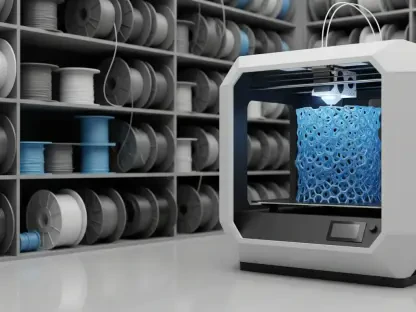The dawn of Industry 4.0 marks a transformative era for manufacturing across the globe, and India is no exception. With a large, capable workforce and a burgeoning industrial sector, the nation stands on the cusp of a digital revolution. This article dives into how Industry 4.0 is expected to catapult the Indian manufacturing industry into a new age of efficiency, innovation, and global competitiveness.Emerging as a beacon of modernization in the manufacturing realm, India is anticipating an investment exceeding $200 billion by 2025 with aspirations to bolster the sector’s GDP contribution to 25% by 2026. Industry 4.0 encapsulates digital tools and platforms such as cloud computing, IoT, AI, and big data analytics—each offering a unique edge to reshape traditional manufacturing processes. This shift towards a digitized industrial landscape is not merely an enhancement of capabilities but a strategic move to position India as a global leader in manufacturing.
The Race for Global Competitiveness
In the race for global competitiveness, India’s manufacturing sector is set to experience profound changes. The strategic adoption of Industry 4.0 is driving the nation toward becoming a global manufacturing powerhouse. By tapping into the vast potential of digital technologies, Indian manufacturers are poised to redefine operational efficiency and adaptability.Streamlining production with smart machines that communicate via IoT and optimizing processes through AI are only the beginnings of a technological renaissance within the industry. The advancements in efficiency, improved labor utilization, and quality control promise not only a safer working environment but also establish India’s foothold in the competitive global market. Access to predictive maintenance and advanced monitoring tools are set to enhance automation and operational dexterity, presenting Indian manufacturers with an indispensable asset: the ability to rapidly meet market demands and deliver unparalleled service.
Digital Infrastructure as the Backbone
The successful integration of Industry 4.0 hinges on the strength of India’s digital infrastructure. Central to this transformation is the establishment of reliable power sources, high-speed internet access, and secure communication lines—components that are essential for incorporating the sophisticated technologies of Industry 4.0.Government initiatives, such as ‘Digital India’, play a critical role in fortifying this foundation. The initiative is instrumental in promoting digital literacy and ensuring that all layers of the manufacturing sector have the capability to leverage advanced technologies. Moreover, such programs are bridging the gap between varying capacities among manufacturing units, enabling even the smallest players to partake in the Industry 4.0 revolution. As the digital framework solidifies, manufacturers across India will find themselves better equipped to absorb new technologies and evolve in unison with the changing industrial landscape.
Small and Medium Enterprises at the Forefront
Recognizing that Micro, Small, and Medium Enterprises (MSMEs) are the vital cogs in India’s manufacturing machine, support for these entities is paramount if Industry 4.0 is to be successfully realized. It is essential to nurture MSMEs, aiding them in overcoming the challenges and harnessing the opportunities that come with digital transformation.Targeted support for MSMEs entails an array of assistance from research and development resources to financial and technical aid. These aids also ensure that MSMEs stay abreast of workforce development programs aimed at fortifying digital competencies. Moreover, MSMEs’ agility allows them to swiftly integrate cutting-edge technology, making their role in the transition to Industry 4.0 as critical as it is dynamic. Their inherent adaptability positions them to lead the charge in India’s industrial refresh.
Reshaping the Workforce for the Future
The shift toward Industry 4.0 will inevitably alter the workforce dynamics within the manufacturing sector in India. An emerging narrative is the potential reshaping of gender dynamics, as automation and robotics make room for a broader spectrum of technical and supervisory roles, thus encouraging more women to join what has historically been a male-dominated field.Preparing for this future will involve more than upskilling—it’s about a wholesale rethinking of educational frameworks and professional training modules to align with the industry’s imminent needs. The infusion of digital literacy and proficiency in handling sophisticated technology is no longer optional; it’s critical. This is a massive undertaking that demands a concerted effort from both the private and public sectors, ensuring that India’s workforce remains competitive and innovative in a digitized world.
Cultivating a Culture of Innovation
No technological revolution can be sustained without fostering a culture that embraces change. For Industry 4.0 to thrive in India’s manufacturing sector, an organizational metamorphosis must occur. This entails nurturing an environment abundant with innovation, transparency in embracing new technologies, and a collaborative spirit that can navigate the intricacies of a digital shift.Spearheading this cultural evolution will be leaders who can see beyond the technological horizon, instilling a digital-first mindset across their organizations. Amplifying the innovation ethos necessitates an alignment of goals among varied stakeholders, including governmental bodies, educational institutions, and industry magnates—a symphony of efforts that creates an ecosystem ripe for digital ingenuity, ensuring that India is not just joining but leading the march towards a smarter, more connected manufacturing future.









